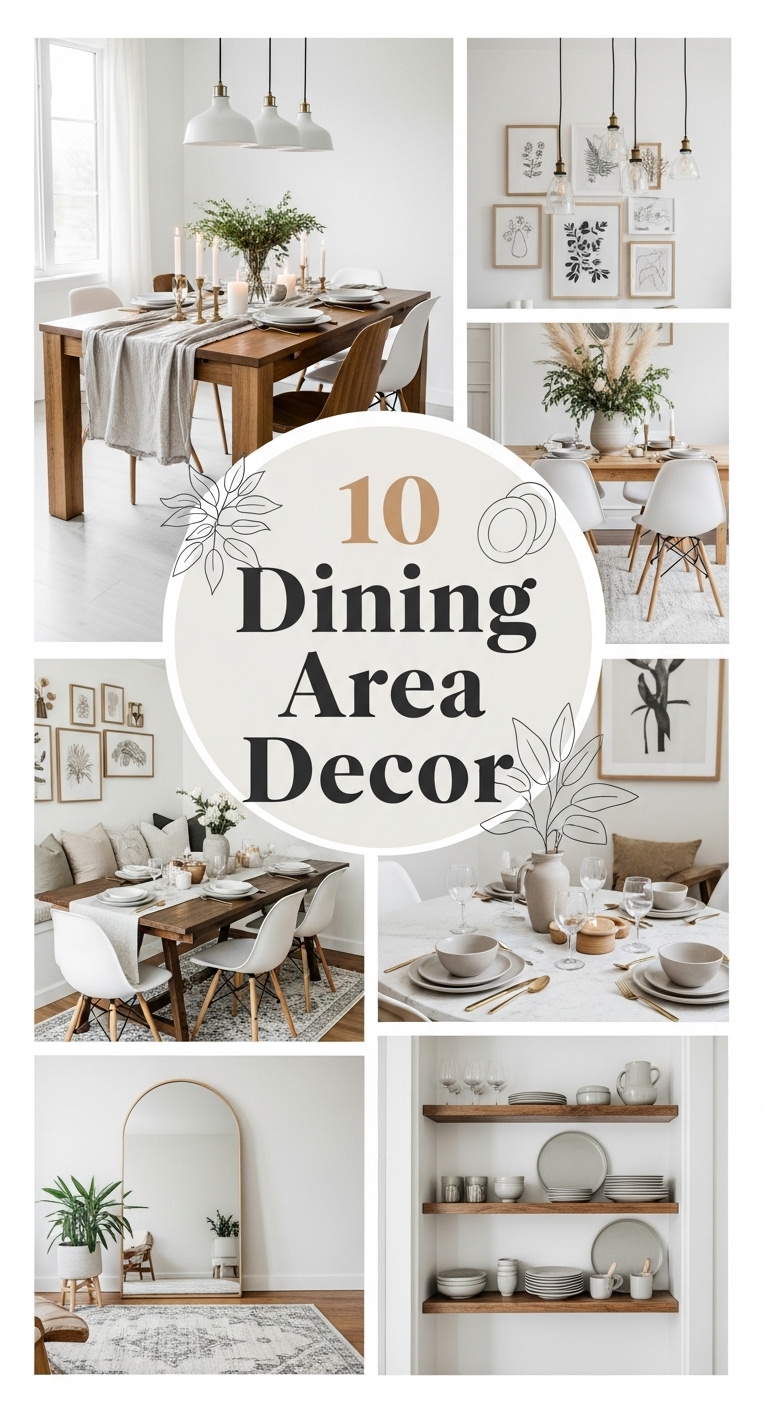
10 Dining Area Decor
The dining area holds a special place in every home. It is where families gather for meals, friends come together for celebrations, and daily routines are shared over food and conversation. Unlike other parts of the house that may serve individual functions, the dining area is inherently communal. Because of its importance, thoughtful decoration can transform it into a welcoming, functional, and stylish space.
Decorating a dining area is about more than just choosing a table and chairs. The colors, lighting, layout, accessories, and personal touches all play a part in creating an inviting atmosphere. From rustic charm to modern elegance, there are countless directions to take when styling a dining space. In this article, we will explore ten dining area decor ideas that can inspire you to design a setting that matches your lifestyle, personality, and home aesthetic.
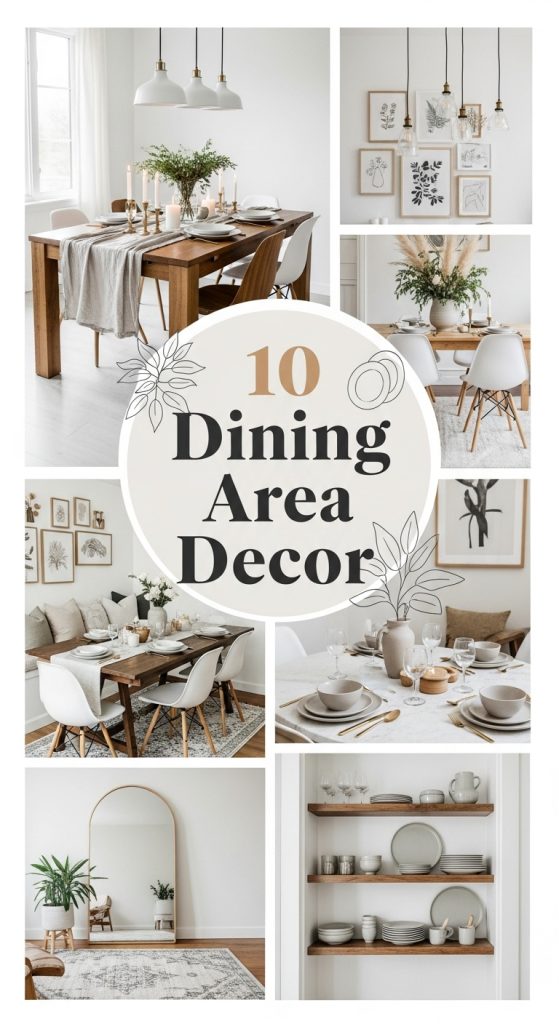
1. Statement Dining Table
The dining table is the focal point of the room, and choosing the right one sets the tone for the entire space. A large wooden farmhouse table creates a warm and rustic feel, while a sleek glass table gives a modern and airy impression.
Round tables are perfect for smaller spaces because they encourage conversation and maximize seating. On the other hand, rectangular tables fit well in long dining rooms. To elevate the decor, consider tables with unique bases, reclaimed wood, or live-edge designs. Adding a table runner or centerpiece helps highlight this focal point.
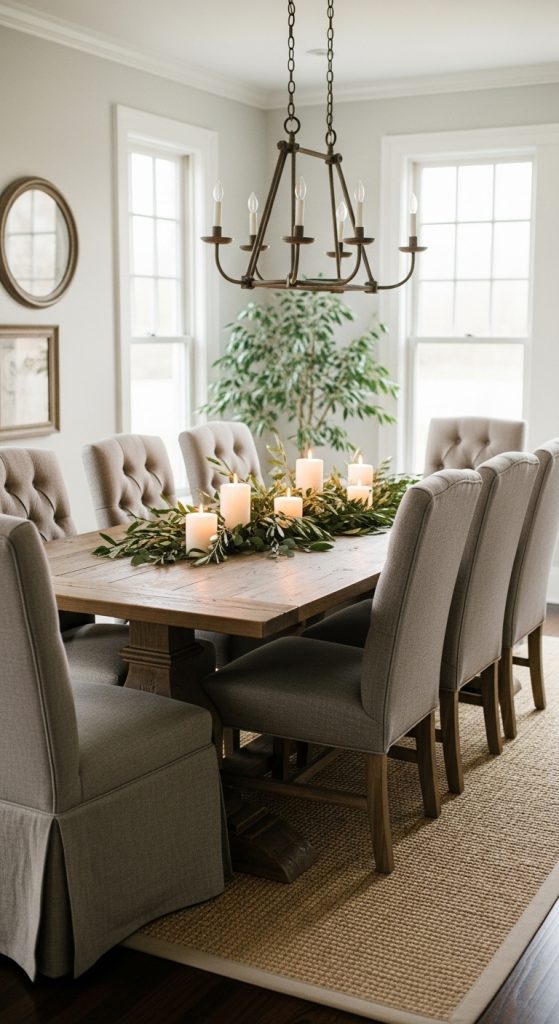
2. Comfortable and Stylish Seating
Seating should balance comfort with style. Upholstered chairs with soft fabrics offer coziness, while wooden chairs bring a traditional look. For a more casual and versatile vibe, mix different chair designs or add a dining bench on one side of the table.
Accent cushions or slipcovers provide a way to update the look without changing the furniture. Bold patterns or textures can add personality and coordinate with the rest of the decor. Ensuring that seating is comfortable encourages guests and family members to linger longer at the table.
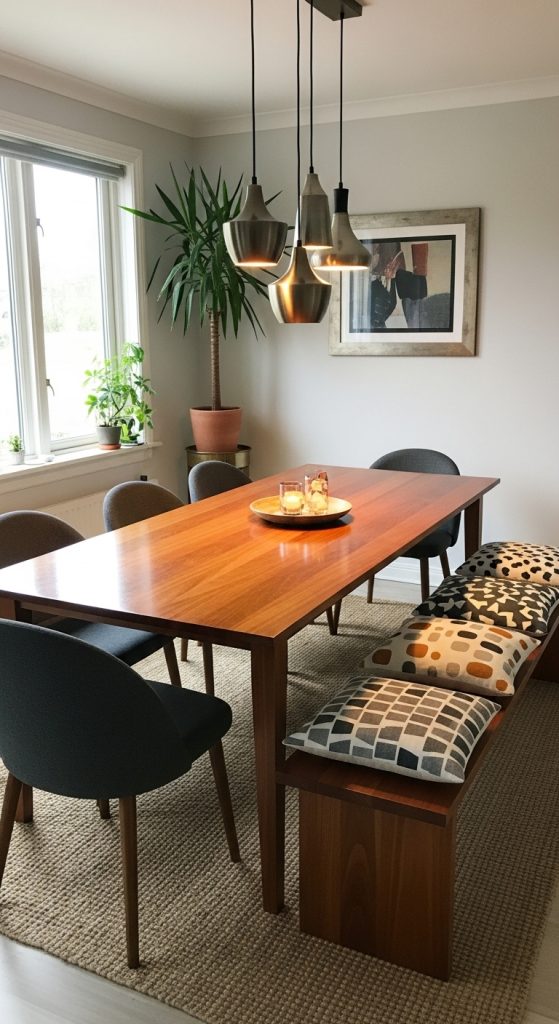
3. Ambient Lighting
Lighting is one of the most powerful elements in dining area design. A statement chandelier can act as a centerpiece, while pendant lights provide a modern flair. Dimmer switches allow the lighting to be adjusted depending on the mood, whether it is a casual family dinner or a romantic evening.
For small dining areas, wall sconces or recessed lighting can create warmth without taking up space. Candles or lanterns on the table add a soft glow that enhances intimacy. The choice of lighting fixtures should complement the style of the room, whether rustic, industrial, or contemporary.
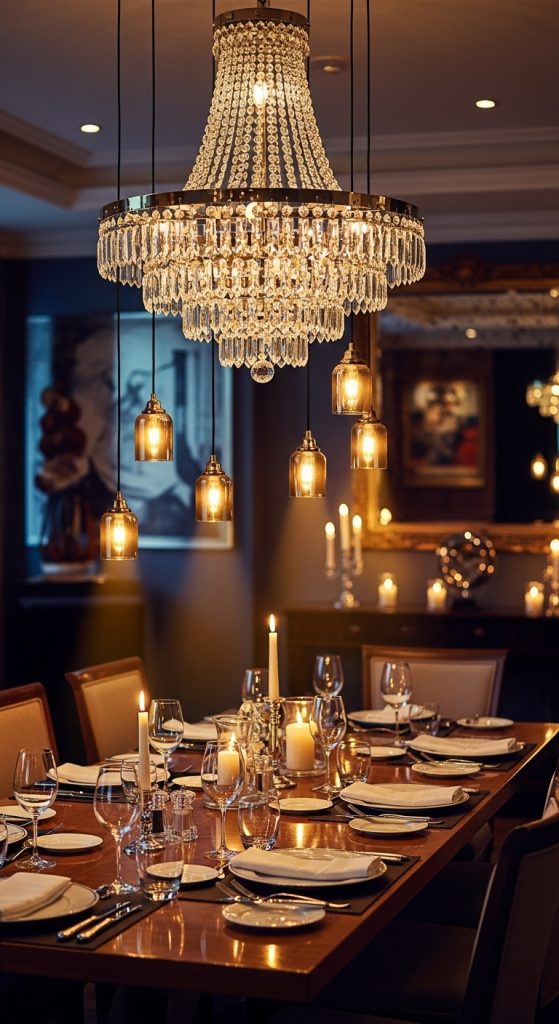
4. Wall Art and Decorative Features
The walls of the dining area should not be overlooked. Artwork can create a strong visual impact, whether through large framed prints, paintings, or a gallery wall of smaller pieces. Mirrors are another popular choice because they make the space feel larger and reflect light beautifully.
For a more textured and dimensional look, consider wall paneling, shiplap, or wallpaper with subtle patterns. Floating shelves can be used to display ceramics, family photos, or decorative plants. The right wall decor makes the dining area feel complete and adds layers of personality.
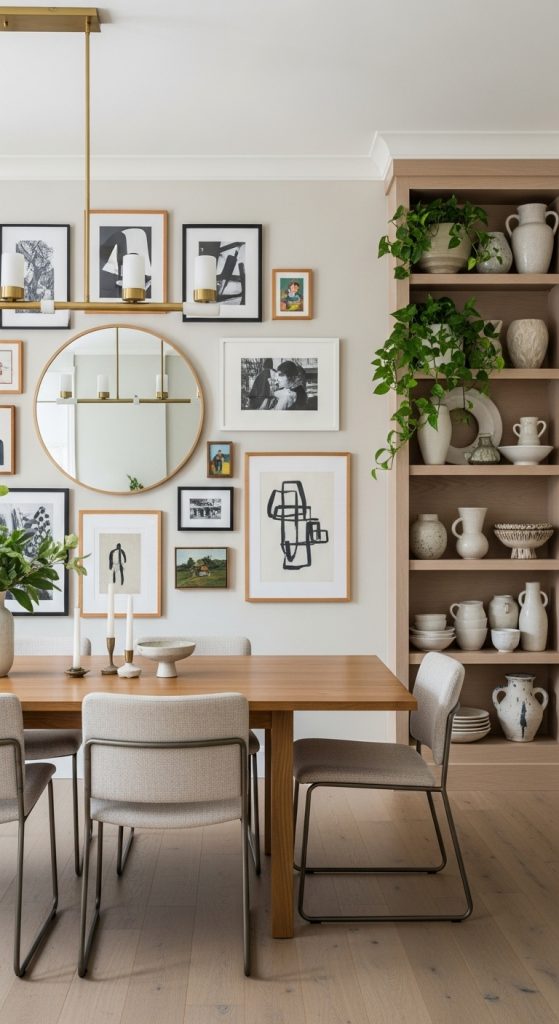
5. Elegant Table Settings
Table settings are where functionality meets style. Placemats, runners, napkins, and dinnerware create an inviting table and allow you to change the decor seasonally or for special occasions. Neutral-colored dinnerware is timeless, while patterned or colored plates can be used to add personality.
A centerpiece such as a vase of flowers, a bowl of fruit, or a collection of candles ties the setting together. Seasonal touches, such as pinecones in winter or fresh greenery in spring, keep the dining area fresh and dynamic.
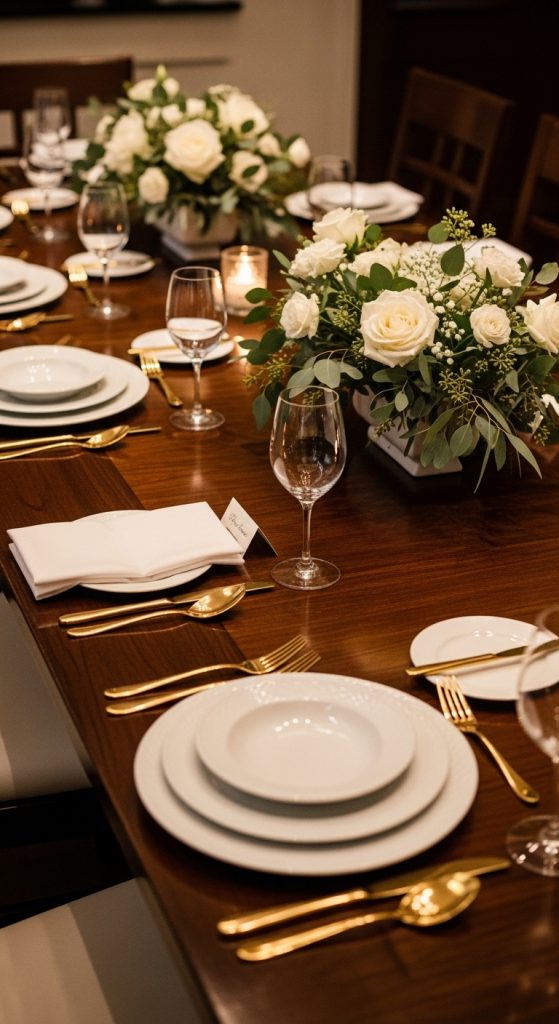
6. Rugs for Warmth and Definition
Adding a rug under the dining table not only adds warmth but also defines the space. This is especially effective in open-plan homes where the dining area flows into the living room or kitchen. The rug should be large enough for chairs to remain on it even when pulled out.
Patterns and colors can enhance the decor. A neutral rug blends seamlessly, while a bold design makes the dining area stand out. Materials should be durable and easy to clean since spills are common in dining spaces.
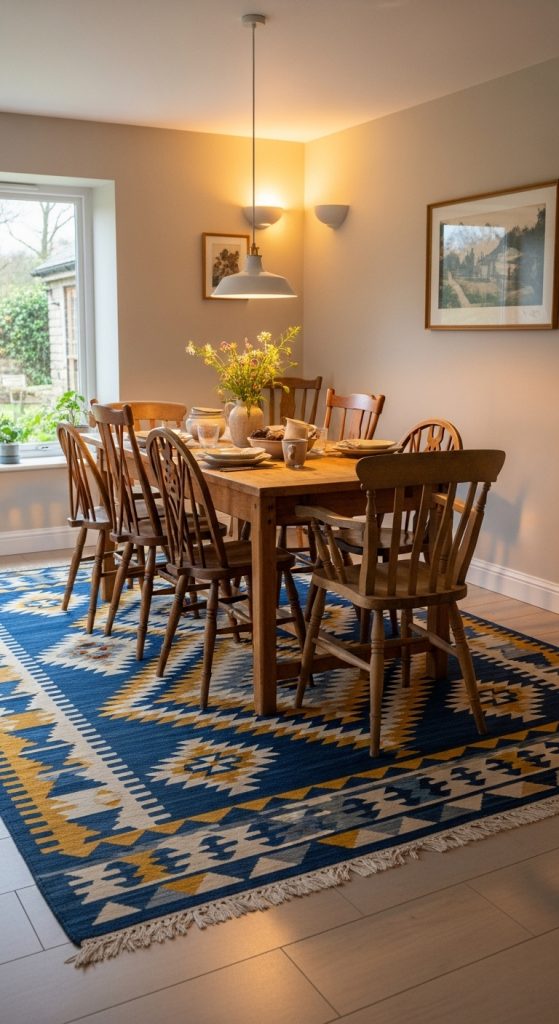
7. Greenery and Natural Elements
Plants bring life into any dining area. A large potted plant in the corner, a row of small succulents on a shelf, or a vase of fresh flowers on the table can make the space feel fresh and vibrant.
Natural elements such as wood, stone, or wicker add warmth and texture. A wooden sideboard, a rattan light fixture, or stone coasters can subtly tie the room together. Combining greenery with natural textures creates a calming and inviting atmosphere.
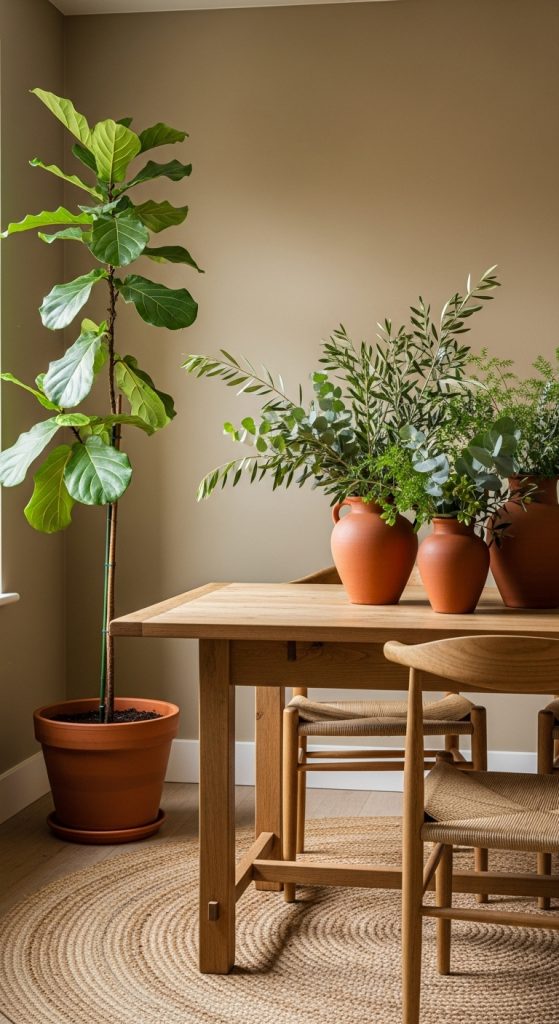
8. Storage and Functional Furniture
Practical furniture such as sideboards, cabinets, or bar carts adds both functionality and decor. Sideboards are excellent for storing dishes, cutlery, and linens while also providing a surface for decorative objects.
A bar cart can be styled with glassware, bottles, and small accessories to create a sophisticated corner. Open shelving can display carefully chosen dinnerware or decor pieces, blending practicality with beauty. Keeping storage stylish ensures the space remains uncluttered and welcoming.
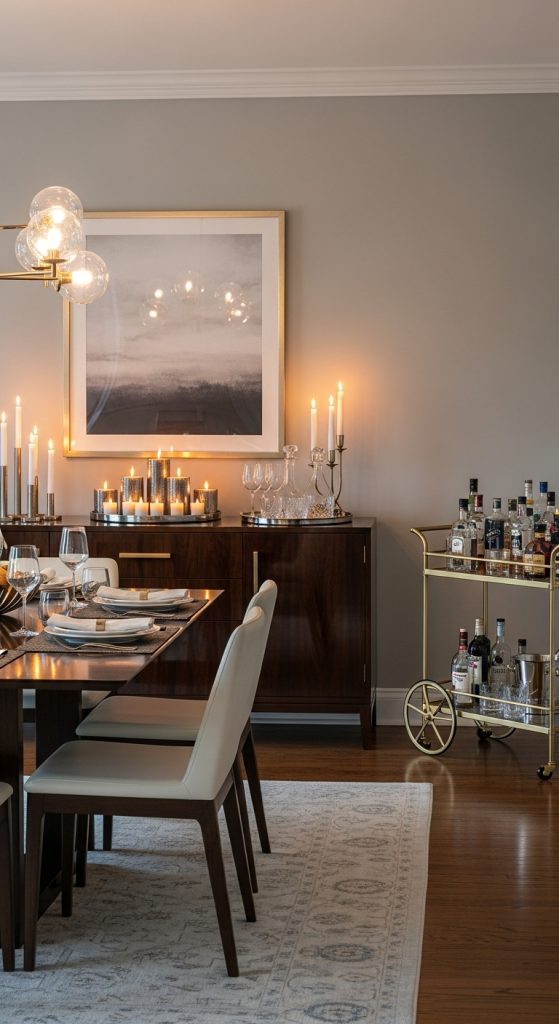
9. Personal Touches and Accessories
Personalizing the dining area with accessories makes it feel truly yours. Family photographs, heirloom dishes, or handmade crafts can be displayed to reflect personal style. A bold centerpiece, decorative candles, or sculptural bowls can become conversation starters.
Mixing textures and colors through cushions, throws, or wall hangings enhances the character of the room. Rotating accessories throughout the year allows for easy updates and prevents the decor from feeling static.
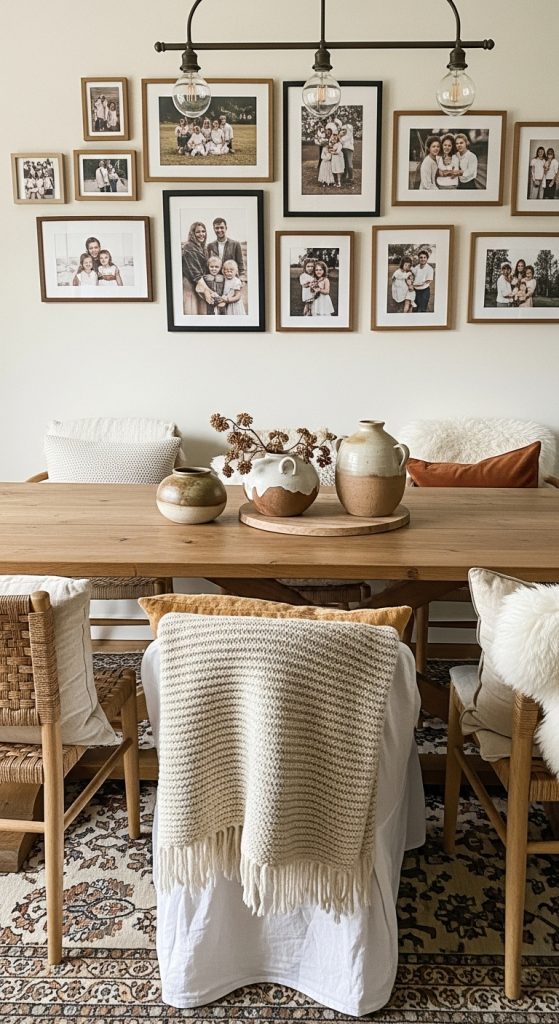
10. Open Concept and Multi-Use Spaces
In modern homes, dining areas are often part of open-concept layouts. Decorating in such a setting requires balance and flow between the dining area and adjoining spaces. Choosing complementary colors and styles helps create harmony.
The dining area can also serve multiple purposes, especially in smaller homes. It may double as a homework station, a craft area, or a workspace. In these cases, flexible furniture such as extendable tables and stackable chairs provides adaptability without sacrificing style.
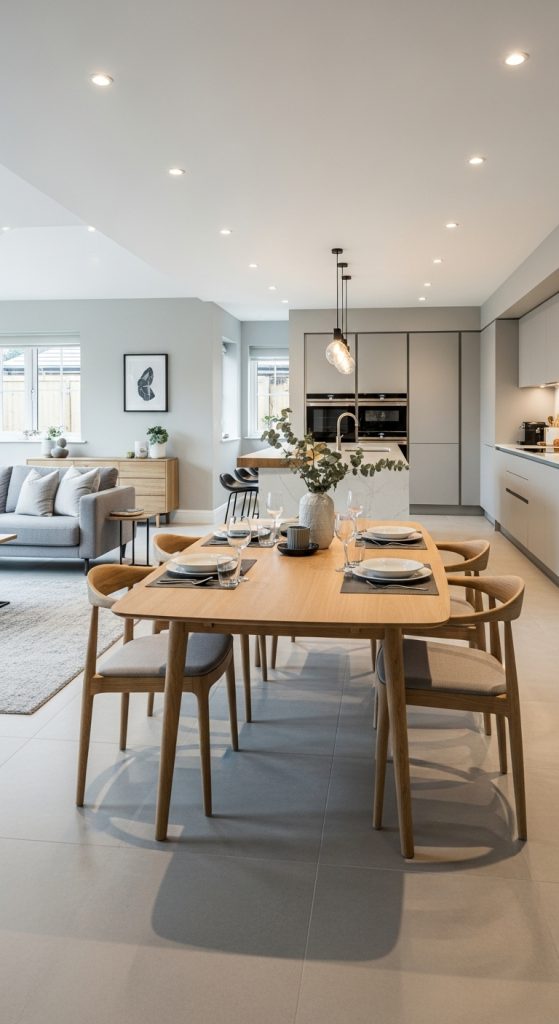
About Me

Chesung Subba
Author/Writer
Hello, I'm Chesung Subba, a passionate writer who loves sharing ideas, stories, and experiences to inspire, inform, and connect with readers through meaningful content.
Follow Me
Connect with me and be part of my social media community.
Leave a Reply